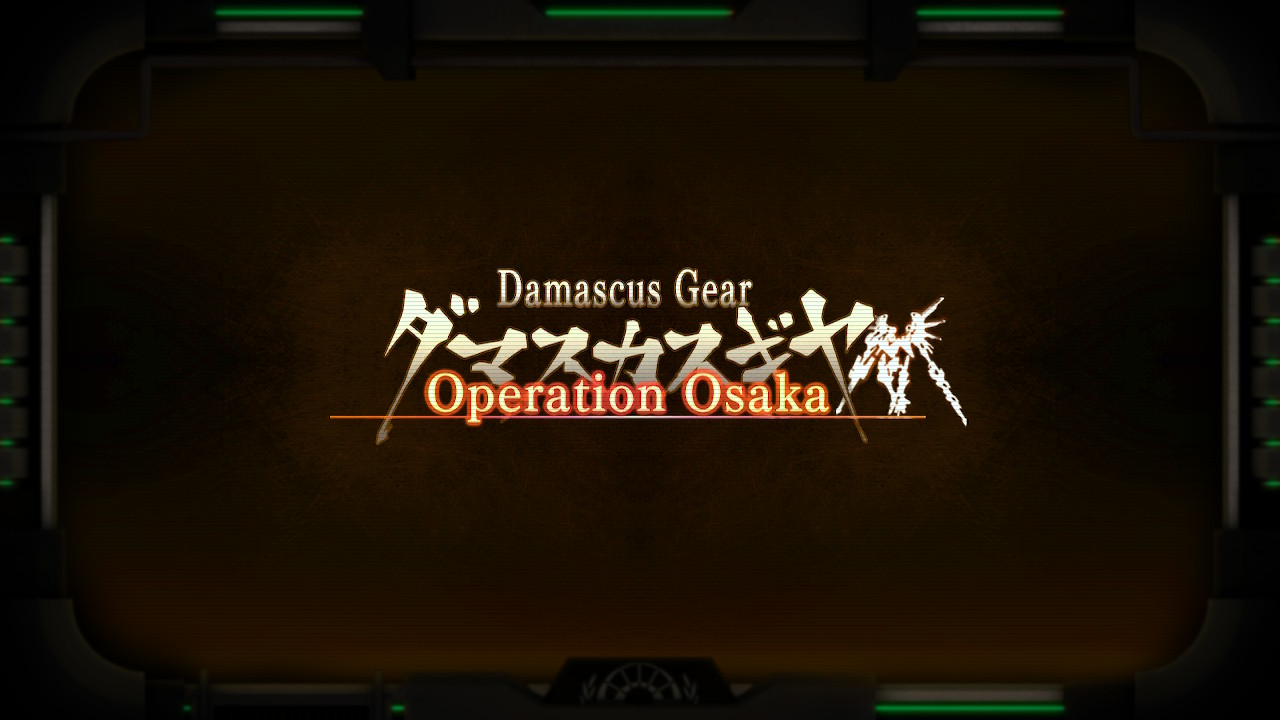Damascus Gear: Operation Osaka
Nintendo Switch
Developed By: A+ Games
Published By: Arc System Works
Category: Action, Role-Playing, Roguelite
Release Date: 08.29.19
Damascus Gear: Operation Tokyo was one of the first games I reviewed here at the Switch Effect, making it the first review where I declared my undying love for giant robots. It was a pretty fun game, overall, even if it did have a few flaws. When the sequel, Damascus Gear: Operation Osaka for the Nintendo Switch, came in for review, it was a no-brainer for me to pick it up and give it a try. It has a lot in common with its predecessor – maybe a little too much, truth be told. There are some gameplay tweaks, which I have a hard time seeing as improvements over the original formula. But the biggest letdown has to be in the game’s narrative structure.
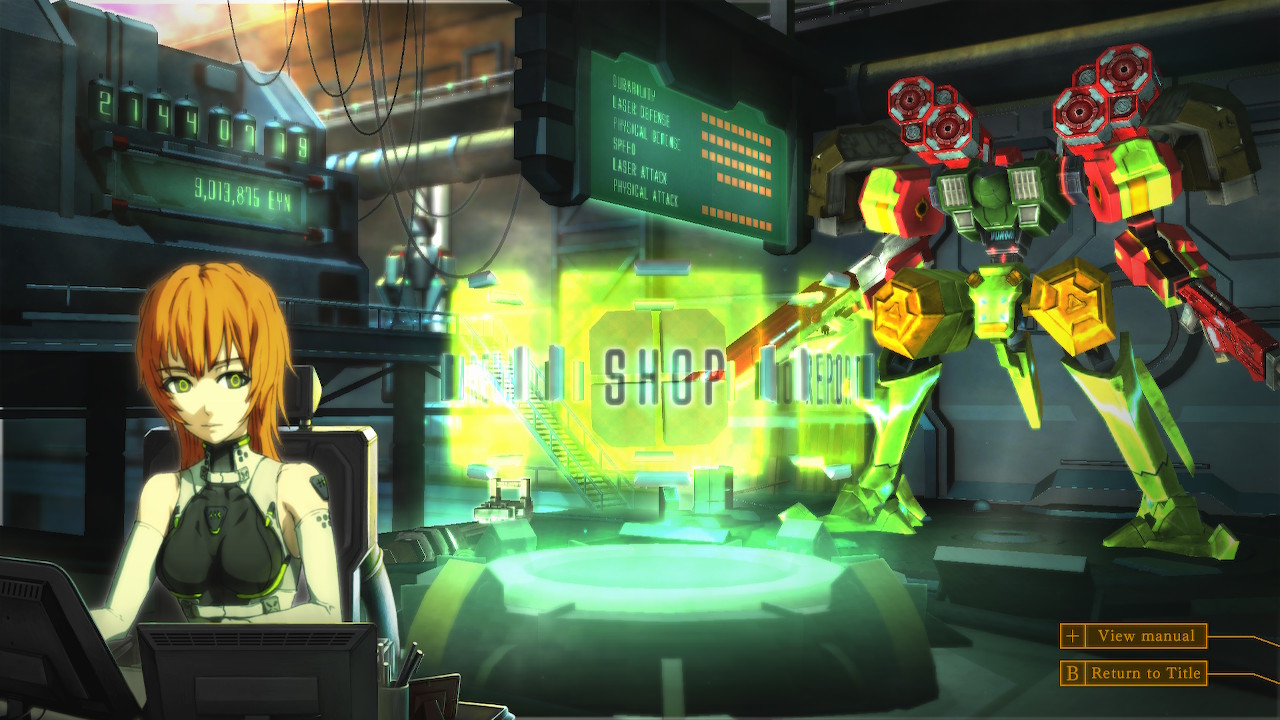
South Ward Story
Fifty years after the events of the first game, Damascus Gear: Operation Osaka takes place in a gigantic, mechanized city known as the Cosmopolis built on the ruins of Osaka. The Cosmopolis was conceived as a way to recover faster from the devastation caused by the out-of-control giant robots known as RAGE. The one problem with the Cosmopolis? Its deeper levels have been infested by out-of-control giant robots, exhibiting some pretty RAGE-like symptoms. The city government hands out licenses to private mech-piloting mercenaries called Rankers, who battle it out for fame and money in the city’s arena in addition to venturing deep into the Cosmopolis, combating the emerging RAGE threat. The player character wakes up in the Cosmopolis one day, with nothing but a giant robot and an android assistant to his name – oh, and his parents’ ten million eyn debt (eyn is the game’s unit of currency, in case that was unclear). So they set about trying to pay off that massive debt the best way a GEAR pilot knows how; by exploring dungeons full of homicidal AI drones. Obviously.
So we’re off to a good start with a solid premise for the game, but the execution leaves a lot to be desired. The story is told basically through your android assistant telling you what’s happening around the city. The first game at least had other characters having conversations to drive the story forward; having one character monologue the entire plot is kind of boring. Story and gameplay have very little interaction; it never feels like the gameplay does anything to drive the story forward. Events happen when they happen, regardless of what you do. It kind of made me feel powerless at worst or not invested in the action at best, and it wasn’t a good feeling. Additionally, the storytelling gimmick of mounting debt used here would make Tom Nook blush. When you pay off your first debt – oops! Another, much larger one pops up. It highlights how thin the game’s storyline and cast are that the narrative needs to have such a device to try and manufacture some tension.
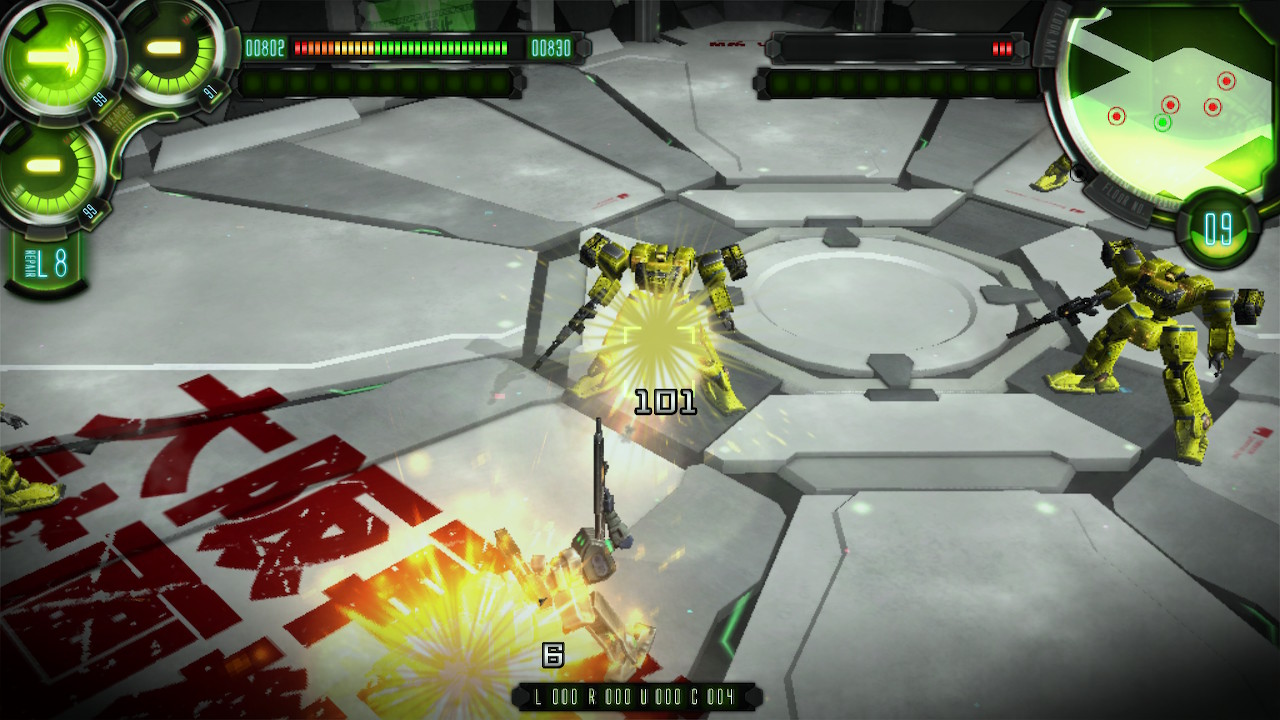
Turning the GEARs
For the first little bit of my playthrough, the gameplay didn’t feel as smooth as it was in the first game, but it gets the job done. At first, things like aiming ranged weapons felt a little janky, but once I started using the lock-on function that quickly became a thing of the past. The basics of combat are similar to those found in Operation Tokyo; your GEAR is equipped with one weapon in each hand, and one shoulder-mounted weapon, each mapped to a different controller button. You can also boost around to dodge incoming attacks or close in more quickly for a melee attack. Once you get used to things the pace of action is comparable to the first game, but it can take a while to get there.
The big difference in gameplay came in the changes made to the melee attack system. All weapons have an energy bar, which is fine for guns and shoulder weapons, but seems a little weird for melee weapons. Being subject to an energy bar limits the number of attacks you can make, which reduces the satisfying, hack’n’slash elements of the first game. Energy bars replenish automatically, so you just have to wait it out to be able to use a weapon again, but who plays an action game to wait? The attack animation also isn’t as smooth or fast as it was previously, which, again, breaks up the action unnecessarily, resulting in a game that isn’t as fun overall. A big part of the appeal of the first game’s action was quickly hacking through mobs of enemies with your melee weapons; it conveyed a sense of power that the sequel fails to match.
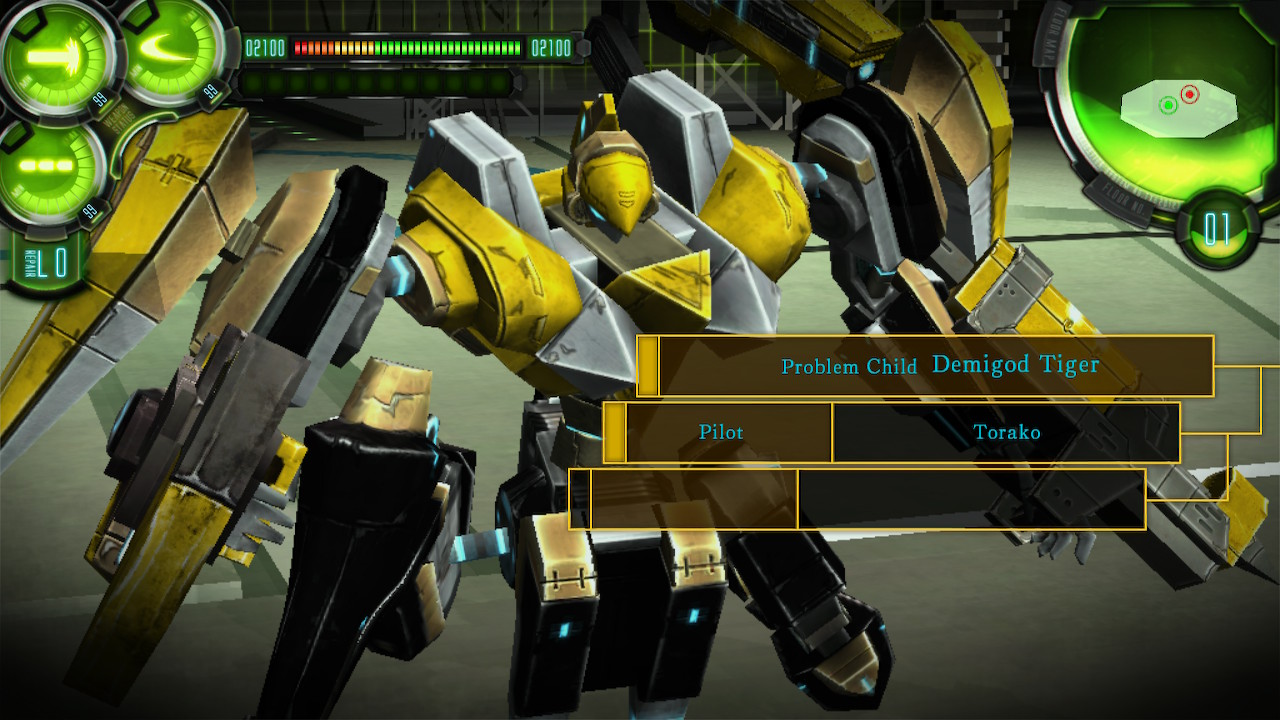
Mix and Match Mechs
When you defeat an enemy in the depths of the Cosmopolis, sometimes they drop mech parts that you can use to build a better GEAR. GEARs have five different parts; the head, body, arms, legs, and shoulders. They affect things like your durability (hit points), defense (there are two different kinds of defense for the two different weapon types, laser and physical), and speed. As I mentioned before, you can also equip a weapon in each hand and one shoulder-mounted weapons as well, which either do physical or laser damage. You can even choose your mech’s color scheme. Customizing my gear was one of the game’s most enjoyable aspects; building new and interesting-looking mechs out of salvaged parts may have been the most fun I had with the game. Eventually, you also gain the ability to level up your pilot’s skills, too, but that doesn’t alter your physical appearance, though it does net you some really useful skills.
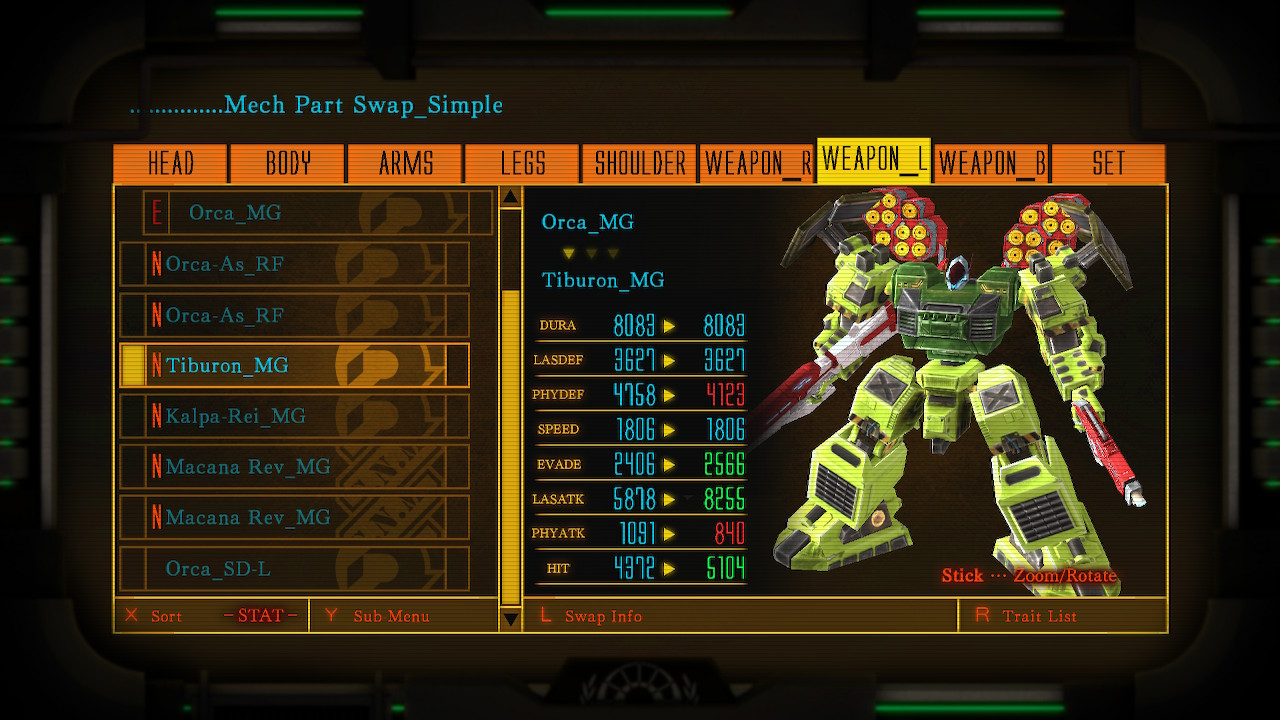
Familiar Settings
Damascus Gear: Operation Osaka’s graphics are about on par with the first game, which is kind of a letdown; they’ve had more than a year to work on the game, and it seems like they didn’t make any improvements to the visuals. The mech designs seem to be largely rolled over from the first entry in the series. They were cool the first time, and remain so the second time around. I did experience some slowdown when there were a lot of enemies onscreen; particularly in deeper levels as the backgrounds got more complicated and detailed and the mission areas got generally larger. The game’s music is a good mix of rock and electronic tracks that crank up the tension of the action without getting repetitive or annoying. The game’s dialogue is fully voice-acted in Japanese, which is pretty cool; it’s just that your android assistant does most of the talking, so the game ends up feeling more like a lecture than a narrative experience.
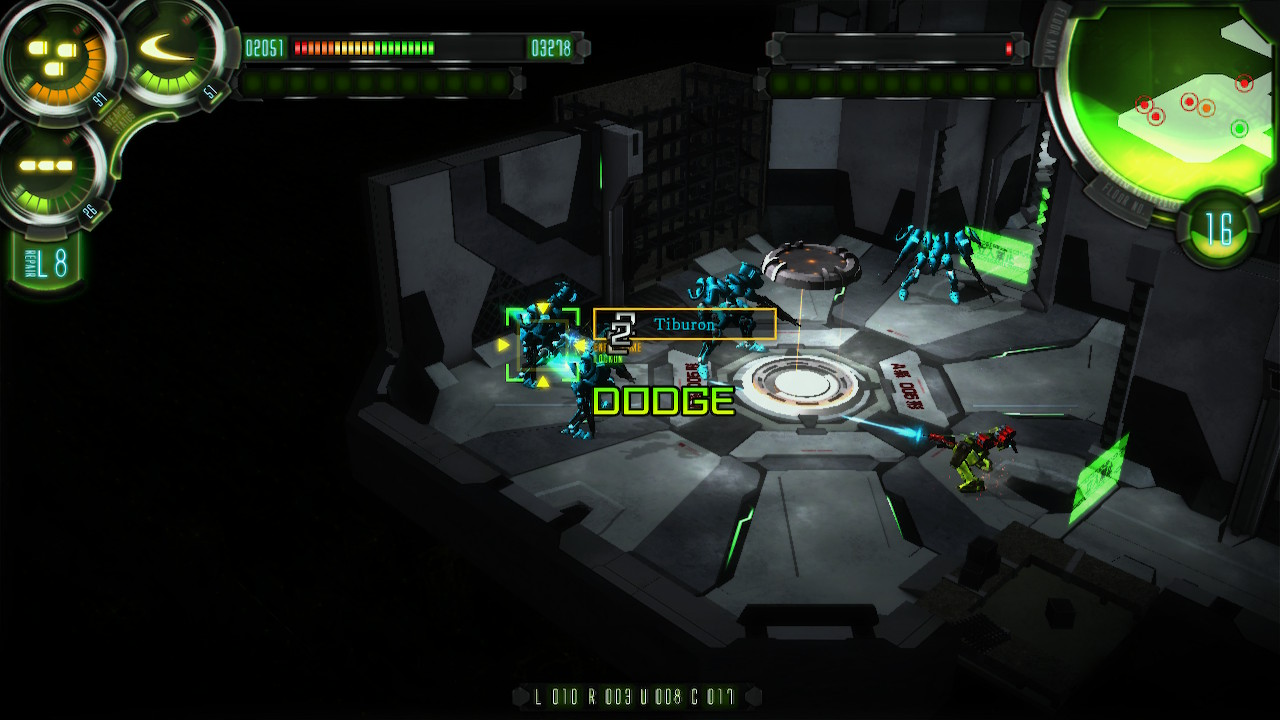
Playability
Damascus Gear: Operation Osaka has no touch or motion controls, and it doesn’t need them either. The gameplay doesn’t really feel any different when playing docked vs undocked, which I always consider a positive. Unfortunately, though, the graphics look a lot more pixelated on the Switch’s handheld screen. Things looked very smooth on my TV, which is great, but while the graphics are perfectly presentable, it’s not like they’re competing with the Astral Chains and BotWs of the world.
TL;DR: Things take an unfortunate step backwards from the first entry in the series, but it’s still an OK game.





Buy Damascus Gear: Operation Osaka
$19.99
Follow APlus Game (All Links in Japanese)
Follow Arc System Works

A game code was provided for review purposes.
[Review] Hello Kitty and Friends Happiness Parade – Nintendo Switch

Developed By: Dabadu Published By: Rogue Games Categories: Rhythm Release…

